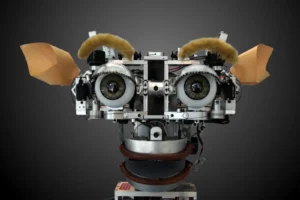What is Artificial Intelligence?
Types of Artificial Intelligence (AI) refers to the creation of intelligent machines that process vast amounts of data. These systems learn from previous experiences and are capable of performing tasks that are similar to those done by humans. AI improves the speed, accuracy, and efficiency of human work. It involves complex algorithms and techniques to develop machines capable of making independent decisions. At the heart of AI are Machine Learning and Deep Learning. AI has found applications in nearly every industry, including:
- Transportation
- Healthcare
- Banking
- Retail
- Entertainment
- E-Commerce
Now that we have a basic understanding of AI, let’s explore the various types of artificial intelligence.
Types of Artificial Intelligence
Artificial Intelligence (AI) can be categorized in different ways, focusing on capabilities and functionalities.
When we consider capabilities, types of artificial intelligence is classified into three types:
1. Narrow AI
2. General AI
3. Super AI
In terms of functionalities, AI is divided into four categories:
1. Reactive Machines
2. Limited Theory
3. Theory of Mind
4. Self-awareness
Let’s first delve into the types of Artificial Intelligence based on capabilities.
Artificial Intelligence Based on Capabilities
What is Narrow AI?
Narrow AI, often referred to as Weak AI, specializes in a single, specific task, unable to venture beyond its predefined scope. It focuses on a particular set of cognitive abilities and excels in that area. As machine learning and deep learning technologies evolve, Narrow AI applications are increasingly woven into our daily lives.

Let’s look at some examples of Narrow AI:
1. Apple Siri: This is a classic case of Narrow AI, functioning within a set range of capabilities. Siri may struggle with tasks that fall outside its range of abilities.
2. IBM Watson Supercomputer: Utilizing cognitive computing, machine learning, and natural language processing, IBM Watson processes information and responds to queries. It notably outshone human contestant Ken Jennings on the game show “Jeopardy!”.
3. Other Instances: Narrow AI is also evident in tools like Google Translate, image recognition software, recommendation engines, email spam filters, and Google’s search ranking algorithm.
Each of these examples demonstrates the targeted and specialized nature of Narrow AI in various applications.
What is General AI?
General AI, often referred to as Strong AI, is designed to comprehend and learn any intellectual task that a human can. This type of AI is versatile, allowing machines to apply knowledge and skills across various contexts. However, achieving General AI remains a challenge for researchers. It requires developing machines with full cognitive abilities, essentially making them conscious. Significant investments are being made in this area, including a $1 billion contribution from Microsoft to OpenAI.
One notable effort in pursuing General AI is the creation of the K computer by Fujitsu, one of the world’s fastest supercomputers. It represents a major step towards Strong AI, but the journey is still long. For example, it took the K computer about 40 minutes to simulate just one second of neural activity, illustrating the complexity of replicating human brain functions.

Another example is the Tianhe-2, developed by China’s National University of Defense Technology. It set a record with 33.86 petaflops (quadrillions of calculations per second). While impressive, it’s important to note that the human brain’s capacity is estimated at one exaflop, equating to a billion billion calculations per second. These advancements show the ongoing effort and challenges in the pursuit of General AI.

What is a Super AI?
Super AI refers to a level of artificial intelligence that exceeds human capabilities, outperforming humans in every task. The idea behind artificial super intelligence is that AI could evolve to a point where it not only mimics human emotions and experiences but also develops its own emotions, needs, beliefs, and desires. Currently, Super AI remains a theoretical concept. Key features of Super AI include independent thought, puzzle-solving, and the ability to make judgments and decisions autonomously.
Next, we’ll explore the different types of Artificial Intelligence, focusing on their functionalities.
Artificial Intelligence Based on Functionalities
To effectively understand the diverse range of Artificial Intelligence systems, it’s crucial to classify them according to their functional capabilities.
What is a Reactive Machine?
A reactive machine represents the most basic type of artificial intelligence, operating without the use of stored memories or past experiences to guide future actions. These machines focus solely on current data, perceiving and responding to the world in real-time. They are designed for specific tasks and lack the capability to venture beyond these predefined functions.
A classic example of a reactive machine is IBM’s Deep Blue, famous for defeating chess grandmaster Garry Kasparov. Deep Blue operates by analyzing the current state of the chessboard, recognizing each piece and its potential moves. It does not draw on past games or learn from experience. Instead, it evaluates the current situation on the chessboard and calculates possible future moves for both itself and its opponent, basing its strategy entirely on the present moment.

What is Limited Memory?
Limited Memory AI refers to systems that make decisions based on recently acquired data, though their memory is not permanent. These AI systems temporarily utilize past information for a set period but do not incorporate this data into a long-term experience repository. A prime application of this technology is found in self-driving vehicles. In the context of self-driving cars, Limited Memory AI constantly monitors and adapts to the movements of surrounding vehicles. It integrates this real-time data with pre-existing static information, like road markers and traffic signals. This combination of dynamic and static data informs the vehicle’s decisions, such as when to switch lanes, prevent cutting off another driver, or avoid collisions. Mitsubishi Electric is actively working on enhancing this technology, specifically for self-driving car applications.
What is the Theory of Mind?
The Theory of Mind AI is a sophisticated and conceptual category of artificial intelligence. It’s envisioned as a technology capable of understanding that individuals and objects in its environment have their own emotions, behaviors, and thoughts. This type of AI aims to comprehend human emotions, sentiments, and mental states. Despite significant progress in this area, fully realizing this kind of AI remains an ongoing endeavor.
A notable instance of the Theory of Mind AI in practice is seen in Kismet, a robot head developed in the late 1990s by a researcher at the Massachusetts Institute of Technology. Kismet demonstrates early strides in this field by mimicking and recognizing human emotions. However, it lacks the capability to follow gazes or engage attentively with humans, indicating the limits of current advancements.

Another example is Sophia, a creation of Hanson Robotics. Equipped with cameras in her eyes and sophisticated algorithms, Sophia can see, maintain eye contact, recognize individuals, and track faces, showcasing the progress in Theory of Mind AI. Yet, even with these capabilities, the full realization of a Theory of Mind in AI, where machines fully understand and empathize with human emotions and thoughts, is still in development.

What is Self Awareness?
Self-awareness AI currently exists only in the realm of hypothesis. This type of system would have an in-depth understanding of its own internal characteristics, conditions, and states, as well as the ability to recognize human emotions. Machines with self-awareness AI would surpass human intelligence. They would not only comprehend and elicit emotions in their interactions but also possess their own emotions, needs, and beliefs. This advanced level of AI, where machines are self-aware and emotionally intelligent, remains a concept yet to be actualized
Artificial Intelligence (AI) research has made remarkable strides, developing innovative solutions for a plethora of challenges ranging from gameplay to medical diagnostics.
AI encompasses several specialized branches, each focusing on distinct aspects and utilizing unique techniques. Key branches of AI include:
1. Machine Learning (ML): This branch is focusing on creating algorithms that learn from data. Machine Learning algorithms find use in a variety of applications, such as image recognition, spam filtering, and natural language processing.
2. Deep Learning: A subset of Machine Learning, Deep Learning employs artificial neural networks to glean insights from data. It’s particularly effective in solving problems in natural language processing (NLP), image recognition, and speech recognition.
3. Natural Language Processing (NLP): NLP bridges the gap between computers and human language. It employs techniques to comprehend and manipulate human language, aiding in machine translation, speech recognition, and text analysis.
4. Robotics: This engineering field involves the design, construction, and operation of robots. Robots, capable of performing automated tasks, are increasingly prevalent in manufacturing, healthcare, and transportation.
5. Expert Systems: These are computer programs designed to replicate the decision-making abilities of human experts. They find applications in various fields, including medical diagnosis, financial planning, and customer service.
Each of these branches plays a vital role in the ever-evolving landscape of AI, contributing to its diverse applications and advancements.
Conclusion
In conclusion, as we delve into the different types of artificial intelligence, we’re moving toward a future where machines possess complete problem-solving capabilities and self-awareness. Our current focus is on enhancing how these diverse types of AI independently learn and make decisions. It’s vital to improve AI systems’ ability to utilize past experiences in shaping their future actions.
This journey through the various types of artificial intelligence holds the promise of revolutionizing sectors ranging from healthcare to entertainment. By advancing AI’s learning and decision-making processes, we are paving the way for more intelligent and autonomous systems. As we continue to explore the full potential of AI, we edge closer to a future where AI, in its various forms, collaborates with humans to address some of the most pressing global challenges.
FAQs:
1. What is an AI model?
An AI model refers to a program that applies mathematical frameworks to predict outcomes or make decisions. Common types of AI models include:
Linear Regression: Used for predicting numeric values based on relationships between variables.
Logistic Regression: Useful for binary classification problems.
Decision Trees: Employed for making decisions and predictions using a tree-like graph.
Neural Networks: Complex models that mimic the human brain, ideal for pattern recognition and data classification.
2. What are the 2 categories of AI?
Artificial Intelligence can be broadly dividing into two categories:
Weak AI: This type of AI is designing for specific tasks, such as playing chess or language translation.
Strong AI: This AI is capable of performing any cognitive function that a human can, potentially transforming numerous facets of life.
3.Who is the father of AI?
John McCarthy, a renowned computer scientist, is often hailed as the father of Artificial Intelligence. He coined the term “artificial intelligence” in 1955 and played a pivotal role in the development of the first AI programming language, Lisp. McCarthy’s contributions laid the foundational concepts for the AI field.


